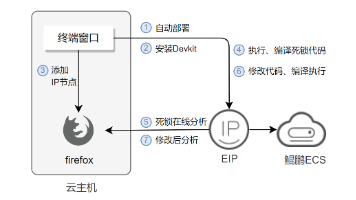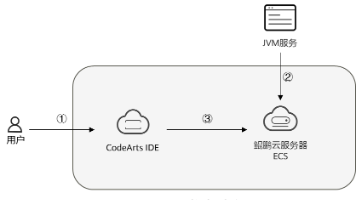转载:http://blog.yufeng.info/archives/2198
最新的Erlang虚拟机(R15B01)很大的一个改进就是加入了对dtrace探测点的支持了, 具体参见这里, 主要目标是方便在生产实践中定位复杂的性能问题。
目前Erlang的虚拟机的探测点支持Linux的systemtap和freebsd的dtrace,我们刚好能够享受的到。
作者Scott Lystig Fritchie在去年的euc中做了个很有意思的报告,参见这里,该PPT很详细的介绍了利用dtrace的探测点可以观察到erlang的行为如下:
Processes: spawn, exit, hibernate, scheduled, …
Messages: send, queued, received, exit signals
Memory: GC minor & major, proc heap grow & shrink
Data copy: within heap, across heaps
Function calls: function & BIF & NIF, entry & return
Network distribution: monitor, port busy, output events
Ports: open, command, control, busy/not busy
Drivers: callback API 100% instrumented
efile_drv.c fifile I/O driver: 100% instrumented
这些探测点基本上属于IO,进程调度,消息发送,driver等虚拟机最底层的和操作系统耦合的部分,对性能的影响巨大。
目前Erlang自己的基础设施并没有涵盖到这部分内容,如dbg,trace机制都无法了解到这些数据,导致在大型的集群系统里面一旦发现性能问题无法很好的展开调查,所以这些探测点刚好填补了空白。
目前这些dtrace probe点是用static marker实现的,细节可以参看这里 和 这里,好处是不用这些特性的时候,不会对性能有任何的影响,只需要为使用付代价。目前支持这种机制的语言和系统有java,python,mysql,pgsql等,可见威力强劲。
好拉,废话少说,我们来体验下。
下载最新的otp, 目前是R15B01, 简单的运行:
2.6.32-131.21.1.tb477.el6.x86_64 |
源码目录下有个README.systemtap.md,会简单的教你如何编译和使用。
由于我们用的是RHEL 6U2, 在编译之前你要确保你的systemtap和systemtap-sdt-devel已经安装, 直接运行
yum -y install systemtap systemtap-sdt-devel
就搞定了,实在搞不懂的可以参考作者的这篇教程
我简单的演示下:
$ ./configure --with-dynamic-trace=systemtap |
由于这个版本的实现存在bug, 在实现DTRACE_GLOBAL_CALL功能的时候,没搞好细节,编译的时候会出错:
beam_emu.c:L1562, L1578, L1592,简单的把这几行注释掉,继续编译就好了,就是global函数的trace功能不能使用而已,无伤大雅。
好了,如果不出意外,带dtrace功能的beam就生成了,我们如何确认呢?
$ stap -L 'process("bin/x86_64-unknown-linux-gnu/beam").mark("*")' |
process("bin/x86_64-unknown-linux-gnu/beam").mark("aio_pool__add") $arg1:long $arg2:long |
process("bin/x86_64-unknown-linux-gnu/beam").mark("aio_pool__get") $arg1:long $arg2:long |
process("bin/x86_64-unknown-linux-gnu/beam").mark("bif__entry") $arg1:long $arg2:long |
process("bin/x86_64-unknown-linux-gnu/beam").mark("bif__return") $arg1:long $arg2:long |
process("bin/x86_64-unknown-linux-gnu/beam").mark("copy__object") $arg1:long $arg2:long |
Erlang R16B (erts-5.10) 1 [64-bit] [smp:16:16] [async-threads:0] [hipe] [kernel-poll:false] [systemtap] |
Eshell V5.10 (abort with ^G) |
1> %%在shell的能力里面看到 [systemtap] |
这样就说明DTRACE的功能已经启用,接着演示下如何使用.
该发行版带了不少的例子程序位于:
$ ls lib/runtime_tools/examples/*.systemtap |
lib/runtime_tools/examples/dist.systemtap lib/runtime_tools/examples/messages.systemtap |
lib/runtime_tools/examples/driver1.systemtap lib/runtime_tools/examples/port1.systemtap |
lib/runtime_tools/examples/efile_drv.systemtap lib/runtime_tools/examples/process-scheduling.systemtap |
lib/runtime_tools/examples/function-calls.systemtap lib/runtime_tools/examples/spawn-exit.systemtap |
lib/runtime_tools/examples/garbage-collection.systemtap lib/runtime_tools/examples/user-probe.systemtap |
lib/runtime_tools/examples/memory1.systemtap |
$ PATH=bin/x86_64-unknown-linux-gnu/:$PATH sudo stap lib/runtime_tools/examples/spawn-exit.systemtap |
pid <0.0.0> mfa otp_ring0:start/2 |
pid <0.1.0> mfa erlang:apply/2 |
pid <0.2.0> mfa erlang:apply/2 |
pid <0.3.0> mfa erlang:apply/2 |
pid <0.4.0> mfa heart:init/2 |
pid <0.4.0> reason normal |
pid <0.5.0> mfa proc_lib:init_p/5 |
pid <0.6.0> mfa erlang:apply/2 |
pid <0.7.0> mfa application_controller:init_starter/4 |
pid <0.8.0> mfa proc_lib:init_p/5 |
pid <0.9.0> mfa application_master:start_it/4 |
pid <0.10.0> mfa proc_lib:init_p/5 |
pid <0.11.0> mfa proc_lib:init_p/5 |
pid <0.12.0> mfa proc_lib:init_p/5 |
pid <0.13.0> mfa erlang:apply/2 |
pid <0.14.0> mfa erlang:apply/2 |
pid <0.15.0> mfa proc_lib:init_p/5 |
pid <0.16.0> mfa proc_lib:init_p/5 |
pid <0.17.0> mfa proc_lib:init_p/5 |
pid <0.18.0> mfa erlang:apply/2 |
pid <0.19.0> mfa proc_lib:init_p/5 |
pid <0.20.0> mfa erlang:apply/2 |
pid <0.21.0> mfa proc_lib:init_p/5 |
pid <0.22.0> mfa user_drv:server/2 |
pid <0.23.0> mfa group:server/3 |
pid <0.24.0> mfa group:server/3 |
pid <0.25.0> mfa erlang:apply/2 |
pid <0.26.0> mfa proc_lib:init_p/5 |
pid <0.27.0> mfa proc_lib:init_p/5 |
pid <0.1.0> reason on_load_done |
pid <0.7.0> reason normal |
sender <0.7.0> -> pid <0.6.0> reason normal |
pid <0.28.0> mfa application_controller:init_starter/4 |
pid <0.28.0> reason normal |
sender <0.28.0> -> pid <0.6.0> reason normal |
pid <0.29.0> mfa erlang:apply/2 |
pid <0.29.0> reason enoent |
sender <0.29.0> -> pid <0.17.0> reason enoent |
pid <0.30.0> mfa erlang:apply/2 |
pid <0.30.0> reason enoent |
sender <0.30.0> -> pid <0.17.0> reason enoent |
pid <0.2.0> reason normal |
sender <0.2.0> -> pid <0.0.0> reason normal |
pid <0.31.0> mfa erlang:apply/2 |
pid <0.32.0> mfa erlang:apply/2 |
在另外一个shell里面运行我们的erlang虚拟机,模拟我们的应用系统,我们就可以看到上面的输出。
Erlang R16B (erts-5.10) 1 [64-bit] [async-threads:0] [hipe] [kernel-poll:false] [systemtap] |
Eshell V5.10 (abort with ^G) |
这里要注意的是我们使用的-smp disable参数,使用的是beam的plain版本,它的进程名是beam
$ pstree -p |grep 7149
|-sshd(1847)-+-sshd(7081)—sshd(7101)—bash(7102)-+-beam(7149)
如果使用多处理器版本,那么进程名是beam.smp,需要修改相应的systemtap脚本里面的进程名。
小结:systemtap无敌,erlang与时俱进!
 已为社区贡献15条内容
已为社区贡献15条内容









所有评论(0)